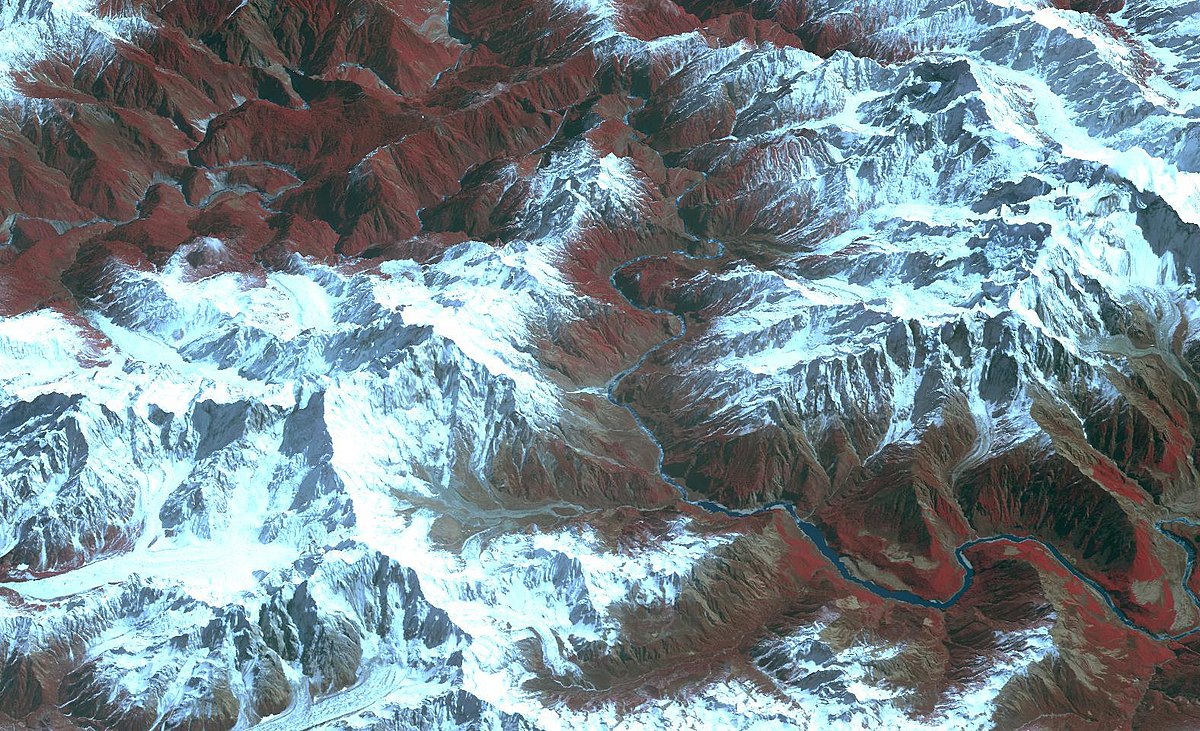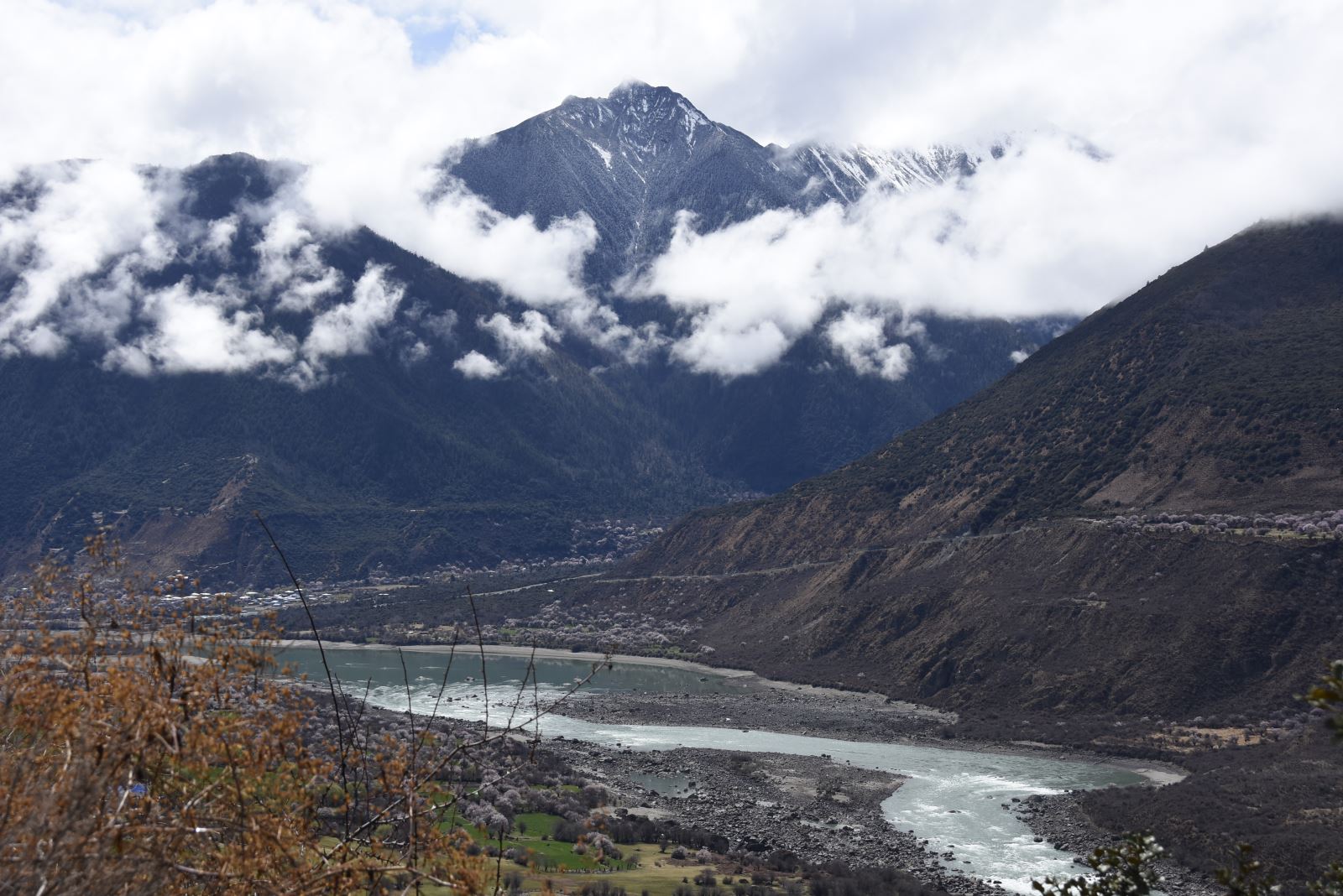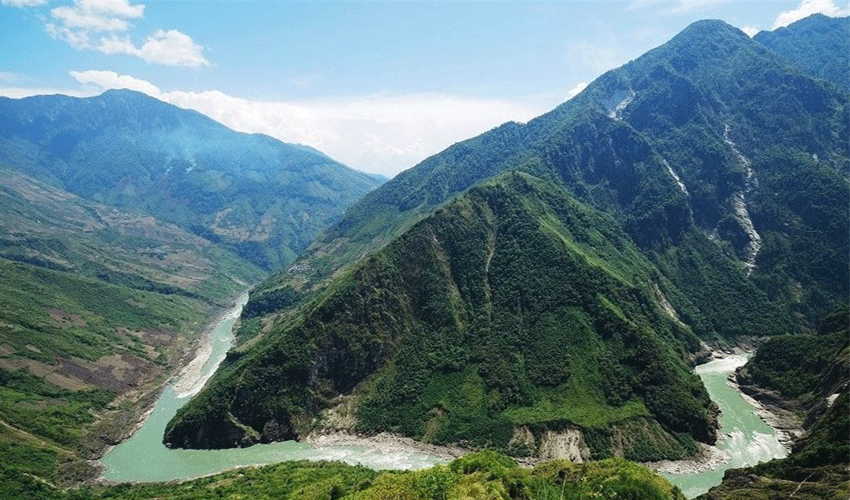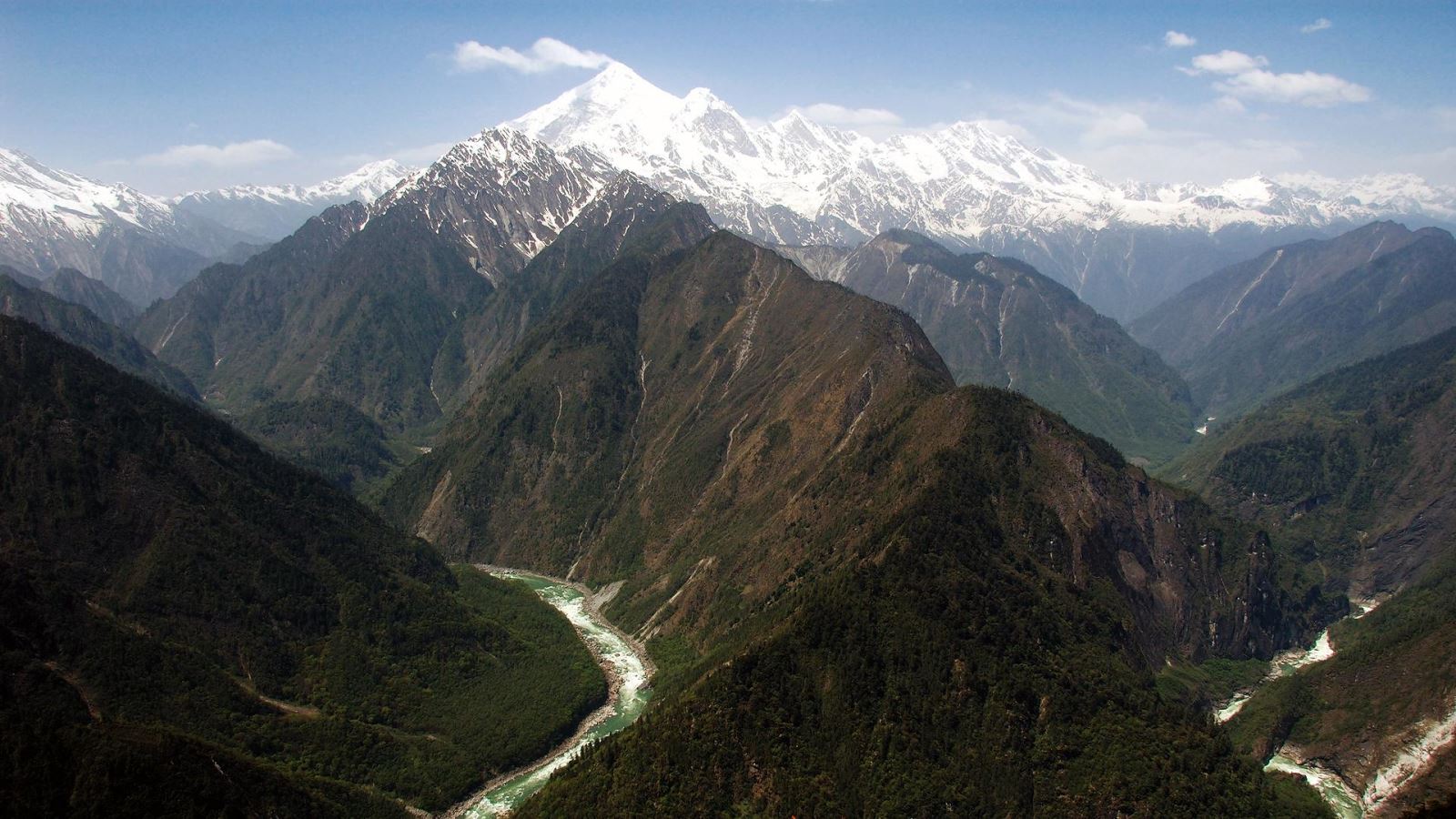The Yarlung Tsangpo Grand Canyon or Yarlung Zangbo Grand Canyon or simply the Tsangpo Canyon, Brahmaputra Canyon or Tsangpo Gorge, along the Yarlung Tsangpo River in Tibet Autonomous Region, China, is the deepest canyon in the world, and at 504.6 kilometres (313.5 mi) is slightly longer than the Grand Canyon in the United States, making it one of the world's largest.

The Yarlung Tsangpo (Tibetan name for the upper course of the Brahmaputra) originates near Mount Kailash and runs east for about 1,700 kilometres (1,100 mi), draining a northern section of the Himalayas before it enters the gorge just downstream of Pei, Tibet, near the settlement of Zhibe.

As the canyon passes between the peaks of the Namcha Barwa (Namjabarwa) and Gyala Peri mountains, it reaches an average depth of about 5,000 m (16,000 feet) around Namcha Barwa. The canyon's average depth overall is about 2,268 m (7,440 feet), the deepest depth reaches 6,009 m (19,714 feet). This is the deepest canyon on land.

The gorge has a unique ecosystem with species of animals and plants barely explored and affected by human influence. Its climate ranges from subtropical to Arctic.

The highest temperature in Tibet is 43.6 °C (110.5 °F) and is recorded near the border of India at about 600 metres (2,000 ft) above sea level.
According to en.wikipedia











